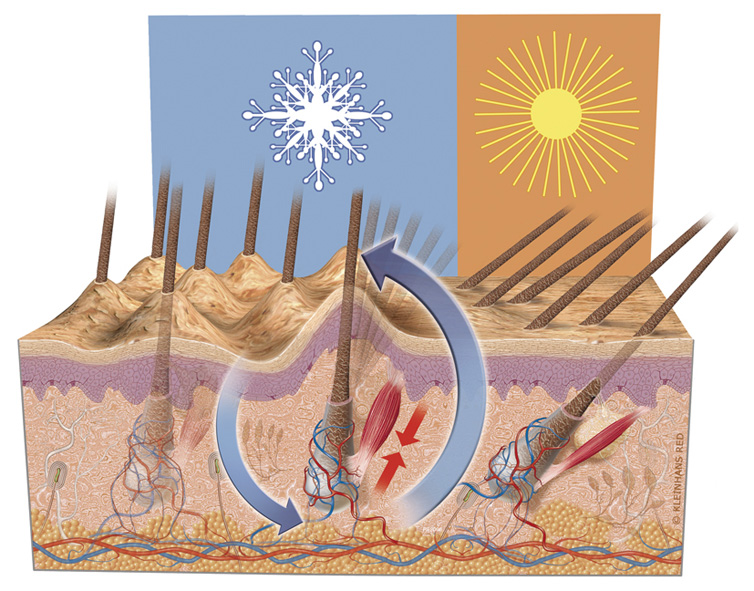Goose bumps

The term cutis anserina or goose bumps (goose flesh, goose pimples) describes a skin phenomenon, which develops by contraction of the musculi arrectores pilorum (hair erector muscles). In larger skin areas, especially on arms and legs, small, bump-like elevations are formed on the skin surface as body hair erects. These bumps remind us of the skin of a plucked goose.
In our illustration the physiological phenomenon of goose skin is visualized. On the right-hand part of the illustration, the normal condition of the skin is shown before goose bumps develop. The skin is smooth and the hairs are at a flat angle to the skin’s surface.
On the left-hand part of the illustration, the reflectory erection of hairs is shown when goose bumps form, e.g. when stimulating the skin with cold. The hair seems to “stand on end” because the contraction of the musculi arrectores pilorum elevates the hair follicles above the rest of the dermis. Distinctive bumps formed by the muscle through contraction become visible. The hair erector muscles of the hair follicles tug on the hair and hoist it upright. Another term for this is piloerection or horripilation.
When goose bumps develop, the bottom part of the hair and not the top portion of the hair is pulled erect. Goose bumps are created as a response to cold, mental/psychological influences such as fear or excitement or to an adrenalin flow. Originally, the reflectory erection of hair as a response to the cold occurred for reasons of temperature regulation (increased insulation). The mechanism behind developing goose bumps may thus be seen as a genetic rudiment. In the animal world, skin and fur form a complex system, which fulfills tasks such as temperature regulation. Furthermore, the erection of hair in animals also intimidates enemies.
